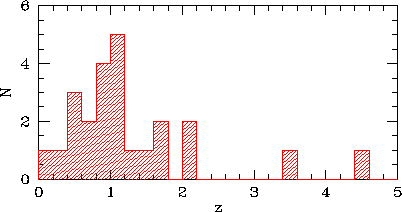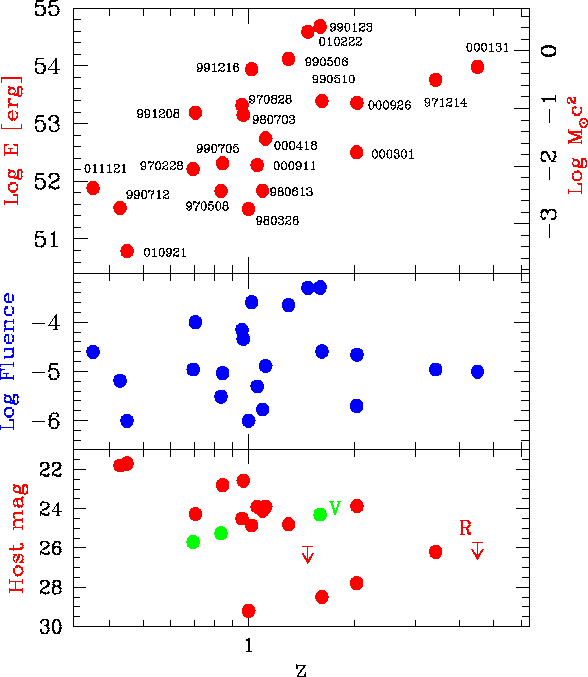 |
![[*]](crossref.png) , all the bursts, whose
redshift has been measured, range between
, all the bursts, whose
redshift has been measured, range between The presence of a host galaxy can be useful for two reasons: first, in most cases redshifts are measured for the galaxy, rather than the afterglow itself (in some cases both), and this is due to the fact that an effective absorption-line spectroscopy for an afterglow, especially at late times, is more difficult, and also because in some cases, despite of a non-detection of the optical afterglow, the host galaxy is identified thanks to a combination of X-ray and radio transients, when available. Second, the location of the Optical Transient (OT) within the host galaxy, in addition to properties of the galaxy itself, may provide important clues about the progenitor's nature.
As it is apparent from fig. ![[*]](crossref.png) , the set of
GRB with known redshifts is poor yet; on this subject, there has
been an interest in trying to find out a relationship between
redshift and some properties of the gamma light curves of the
prompt emission, like time variability ([Reichart et al., 2001],
[Fenimore and Ramirez-Ruiz, 2000], [Schaefer et al., 2001a], [Schaefer, 2001b]).
, the set of
GRB with known redshifts is poor yet; on this subject, there has
been an interest in trying to find out a relationship between
redshift and some properties of the gamma light curves of the
prompt emission, like time variability ([Reichart et al., 2001],
[Fenimore and Ramirez-Ruiz, 2000], [Schaefer et al., 2001a], [Schaefer, 2001b]).
 |
![[*]](crossref.png) the energy released (as calculated
in the isotropic case), the fluence and the magnitude of the host galaxy
are expressed as a function of the redshift
the energy released (as calculated
in the isotropic case), the fluence and the magnitude of the host galaxy
are expressed as a function of the redshift